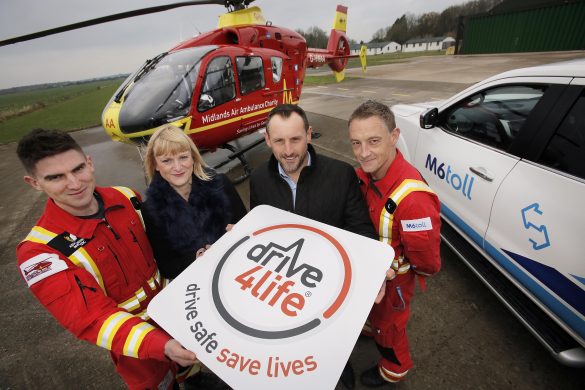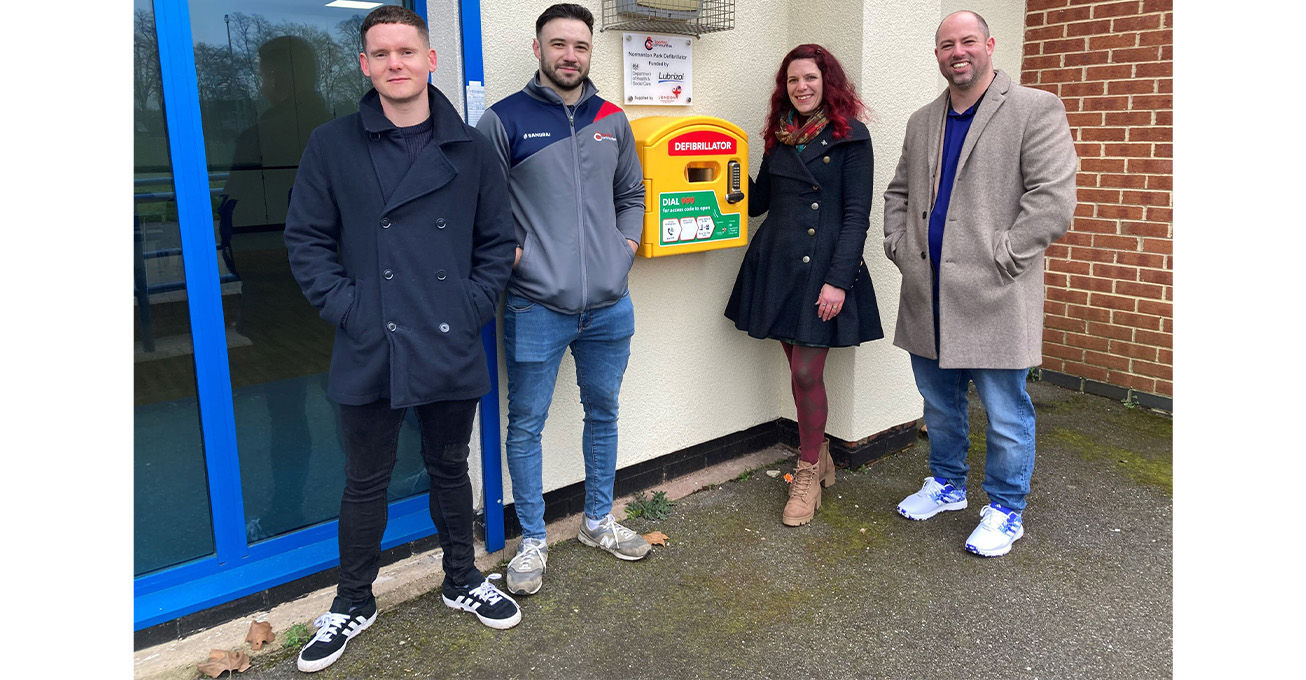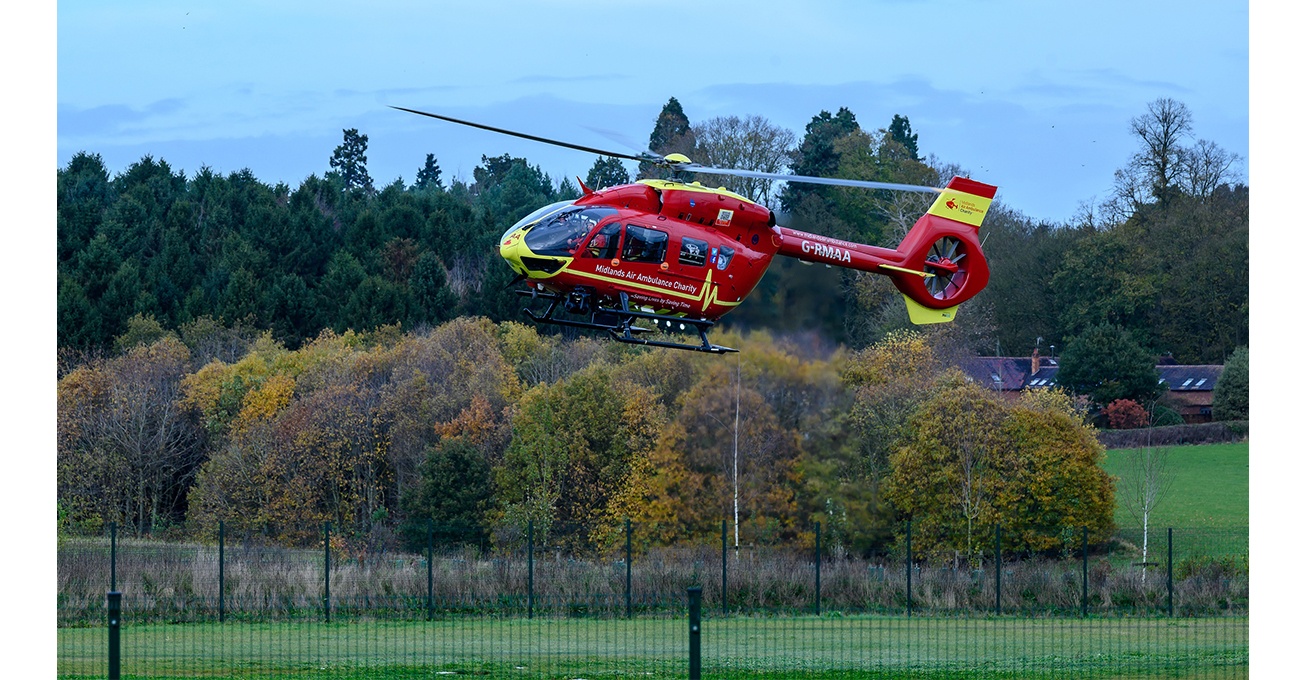Midlands Air Ambulance Charity, in partnership with M6toll, is urging road users across the region to drive to the conditions, following the recent bad weather warnings in relation to storms Ciara and Dennis, to help prevent further road traffic collisions (RTCs).
The charity, which has attended over 670 RTCs in the last year, has seen an increase in more severe collisions during the winter months.
Ian Roberts, air operations manager for Midlands Air Ambulance Charity says: “Many factors can cause RTCs, and these factors increase with wet or cold weather. As well as seeing a higher number of collisions during the winter, the injuries we come across can be more severe, and quite often, life threatening.”
Highways England provide the following safety tips for drivers:
- In snow and ice, drivers should stick to the main roads where they can and only travel if really necessary.
- In high winds, there’s a particular risk to lorries, caravans and motorbikes, so drivers should slow down and avoid using exposed sections of road if possible.
- In heavy rain, drivers should keep well back from the vehicle in front, gradually ease off the accelerator if the steering becomes unresponsive, and slow down if the rain and spray from vehicles makes it difficult to see and be seen.
- In fog, drivers should switch on their fog lights and not use lights on full beam as the fog will reflect the light back. If you really cannot see, you should consider stopping in a safe place until conditions improve.
Driving in difficult conditions is one of the main ways that car drivers seem to get into accidents. Drivers don’t take into account just how dangerous the roads become when they become slippery, or icy, or when it’s foggy. Drivers still seem to drive around with the same bad habits. It’s one of the reasons why so many no win no fee injury lawyers win their cases. Drivers driving badly in bad weather is just a recipe for disaster and a quick route down the claim lane. It’s so terrible to be involved in road traffic accidents, especially if some people get hurt. The better you understand how to handle driving in bad conditions, the less likely you’ll be to be involved in an accident.
James Hodson, Director of Motorway Operations for M6toll, adds: “We do everything we can to ensure the motorway stays safe throughout the year, whatever the weather. During the winter we have a 5,000 tonne reserve of rock salt, a team of 34 trained winter maintenance operatives, five gritters including six vehicles equipped with snow ploughs on standby to treat the road around the clock – but still ask our road users to be extra mindful of driving conditions.”
Highways England’s head of road safety, Richard Leonard, concludes: “In severe weather condition we would encourage road users to drive only if it’s necessary – your safety is our top priority and our advice is to work at home, travel by public transport or to wait until the weather and road conditions have improved.
“If this is not possible then plan your journey carefully, monitor weather reports and pack a snow kit of blankets, food, water and a shovel and before you set off, make sure your vehicle is ready for the journey and is clear of snow.
“Anyone thinking of using the roads should be advised to keep their distance and reduce speed, because even in conditions that seem normal, and the snow is not settling, it can be slippery if ice patches have formed, or where fresh grit has not been worked into the carriageway.”
In severe weather make sure your vehicle is prepared and make time to:
- Clear car windows, mirrors, lights and the top of your roof of snow before setting off, driving with snow on your car could result in you breaking the law.
- De-ice your windscreen and take time to clear the inside of your windscreen too.
- Check your wipers – make sure your wipers are in good working order so you’re able to clean your windscreen effectively.
- Check tyres for adequate tread and inflation, poor tyres will not grip when driving on snow and ice.
- To ensure you have good visibility check your screenwash and make sure there is an additive it to stop it from freezing.
- Make sure your lights are clean and working.
- Make sure your car has a full tank of fuel, so that if you get stuck in a queue, you can run the engine to keep warm.
Driving in ice and snow requires a very different driving style you need to:
- Reduce your speed, the chances of skidding are much greater and it can take as much as ten times longer to stop on an icy road as it does on a dry one.
- Drive smoothly and accelerate gently, use low revs and change up to a higher gear as quickly as possible.
- Avoid sudden manoeuvres that might unbalance the vehicle, such as sharp steering or braking. Doing so increases the likelihood of your car skidding.
- If your car does lose grip, try not to panic; the key thing is to take your foot off the accelerator and steer gently into it.







